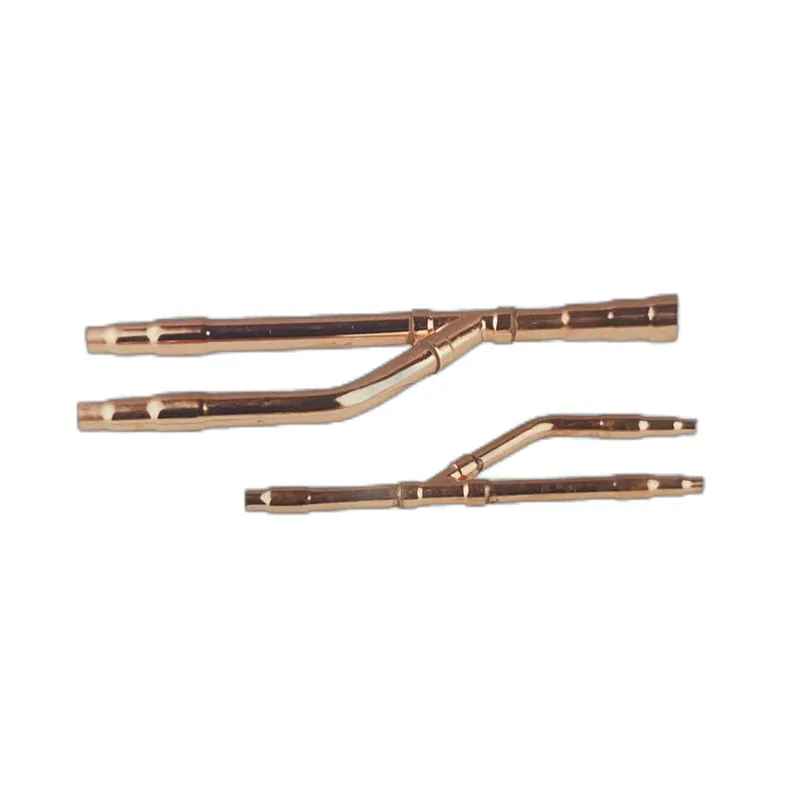What Role Does a Branch Pipe Play in Plumbing and Fluid Systems?
2024-12-04
When it comes to plumbing and fluid transport systems, many components work together to ensure that water, gas, or other fluids move efficiently and safely. One such component that often goes unnoticed but is crucial to the overall system's functionality is the branch pipe. But what exactly is a branch pipe, and why is it so important?
In this blog, we will explore what branch pipes are, their uses, and why they are essential for both residential and industrial plumbing systems. Let’s dive into the role of branch pipes and why they remain a vital part of fluid distribution.
What Is a Branch Pipe?
A branch pipe, often referred to as a tap-off or offshoot pipe, is a smaller pipe that connects to a larger main pipeline. The primary function of a branch pipe is to divert the flow of fluid from the main pipe to another location in the system. It essentially "branches off" from the main pipeline, hence the name.
Branch pipes are commonly used in plumbing systems, heating and cooling systems, and various industrial applications where fluids need to be directed to different parts of a facility or structure. They can come in various sizes and materials, depending on the specific needs of the system.
Why Are Branch Pipes Important?
1. Efficient Fluid Distribution
The most significant role of a branch pipe is to distribute fluids efficiently. Whether it's water, gas, or any other fluid, a branch pipe allows the main pipeline to serve multiple areas at once. For instance, in a residential plumbing system, branch pipes connect the main water line to various faucets, showers, and appliances. This distribution ensures that water can flow to the desired locations without any unnecessary detours or complex rerouting.
In industrial settings, branch pipes allow for the distribution of liquids or gases to different machines, equipment, or processing areas. By connecting different components of a fluid system, branch pipes enhance the overall efficiency of the setup.
2. Space and Cost Efficiency
Instead of laying multiple large pipes throughout a building or facility, a branch pipe system enables the use of a single main pipeline that can then be tapped into using smaller branch pipes. This results in cost savings on materials, installation, and maintenance. It also minimizes the space required for piping, making it a more compact solution for fluid transport.
In industrial or commercial buildings, using branch pipes helps in optimizing space usage, especially in areas where large main pipes could obstruct movement or take up valuable real estate.
3. Customization and Flexibility
Branch pipes offer significant flexibility in fluid systems. Since they can be installed at various points along a main pipeline, the system can be easily customized to suit the needs of different areas of a building or industrial setup. You can add more branch pipes as required to accommodate additional fixtures, machinery, or appliances.
This makes branch pipes a great solution for systems that may need to be modified, expanded, or reconfigured in the future. Whether adding new plumbing to a house or setting up additional fluid lines in a factory, branch pipes provide the adaptability needed for growth and change.
4. Pressure Control and Regulation
In certain plumbing or industrial fluid systems, controlling pressure is essential to prevent damage to the system and ensure the proper functioning of equipment. Branch pipes allow for more efficient pressure regulation, as the main pipe can be designed to maintain a consistent flow of fluid, while branch pipes can be fitted with valves or pressure regulators to control the flow to specific areas.
This feature is particularly valuable in systems that carry gases, such as air or steam systems, where maintaining specific pressure levels is critical for the safety and efficiency of the operation.
5. Maintenance and Repairs
Having branch pipes in a fluid system makes maintenance and repairs much easier. If a problem arises in a particular section of the system, such as a clog or a leak, the issue can often be isolated to the branch pipe rather than the entire main pipeline. This minimizes downtime and prevents the need for major repairs on the entire system.
Additionally, since branch pipes are smaller and typically easier to access, maintenance can be performed with minimal disruption. For homeowners, this means a quicker fix to plumbing issues; for businesses, it can prevent costly downtime and improve the longevity of equipment.
Types of Branch Pipes
Branch pipes come in various forms, each suited to specific applications. Some of the most common types include:
- Tee Fittings: A "T"-shaped fitting that connects a branch pipe to the main pipeline at a 90-degree angle.
- Elbow Fittings: Branch pipes can also connect to the main pipeline at an angle, usually 45 or 90 degrees, using elbow fittings. This type of connection is used when the direction of the flow needs to change.
- Coupling Fittings: These are used to connect smaller diameter branch pipes to the main pipe. They are often used in household plumbing to link fixtures like sinks, bathtubs, or washing machines.
- Wye Fittings: Similar to tee fittings, but used for connecting pipes in a "Y" shape. These are more common in larger systems where the flow needs to be distributed in multiple directions.
The type of fitting chosen depends on the angle and direction of the flow, the materials being used, and the size requirements of the system.
Materials Used for Branch Pipes
Branch pipes are made from various materials, depending on the system’s requirements:
- PVC (Polyvinyl Chloride): Common in residential plumbing for water distribution because it’s lightweight, durable, and cost-effective.
- Copper: Frequently used in water and gas lines, copper is durable and resistant to corrosion, but it is more expensive than PVC.
- Steel: In industrial systems, steel is often used for branch pipes because it can withstand high pressures and extreme temperatures.
- PEX (Cross-Linked Polyethylene): A flexible material that is often used in residential plumbing, especially for radiant heating systems and water distribution.
Conclusion
In any plumbing or fluid system, branch pipes play an essential role in distributing fluids efficiently, controlling pressure, and providing a flexible solution for expanding or modifying the system. Whether you're building a new home, setting up a commercial space, or designing a large industrial facility, the use of branch pipes allows for a well-organized, cost-effective, and customizable approach to fluid management.



